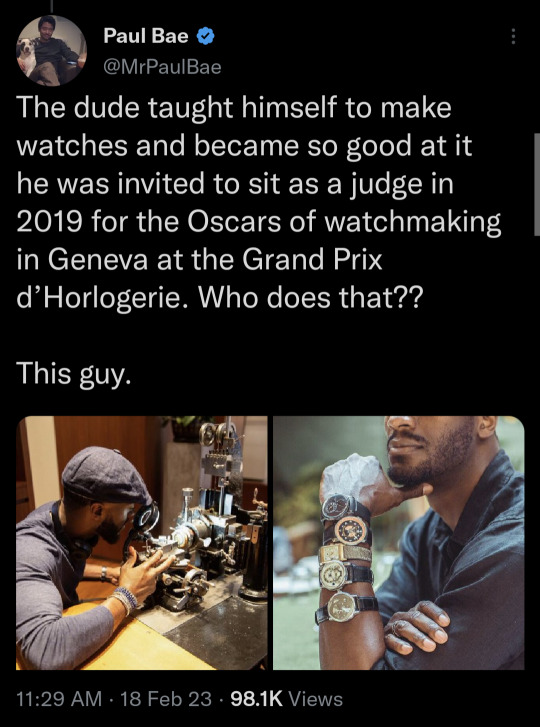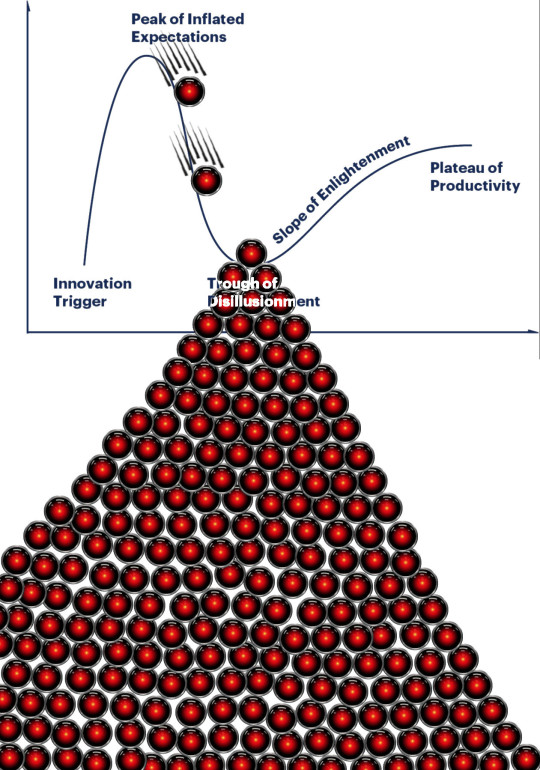#RobbReport.com
Text
Babe Ruth’s ‘Called Shot’ Jersey From The 1932 World Series Could Fetch Over $30 Million At Auction
Heritage Auctions Believes It Will Become The Most Expensive Sports Collectible Ever Sold at Auction.
— By Rachel Cormack | May 22, 2024

Heritage Auctions
Collectors will have the chance to catch one of the most important pieces of baseball memorabilia in history this summer.
A Gray New York Yankees Jersey Babe Ruth Wore During Game 3 of the 1932 World Series will go under the gavel at Heritage Auctions in late August. The auction house estimates the rarity could hammer down for $30 million or more, setting a new world record in the process.
“Ruth’s World Series jersey is the most significant piece of American sports memorabilia to be offered at auction in decades,” Chris Ivy, director of sports auctions at Heritage, said in a statement. “Given its history, its mythology, we expect that when the final bid is placed, it will hold the record as the most expensive sports collectible ever to cross the auction block.”

The Jersey Has Been Photo-Matched and Authenticated. Heritage Auctions
The “Called Shot” jersey, which bears Ruth’s No. 3, was a part of one of baseball’s most famous (and often debated) moments. The Sultan of Swat was sporting it as he stepped up to the plate in the fifth inning of Game 3 of the 1932 World Series to face Chicago Cubs pitcher Charlie Root. With the score tied between the Cubs and Yankees, the slugger failed to hit the ball not once but twice. In between strikes, Ruth pointed to the center-field bleachers. Whether he was calling out his shot, pointing at the pitcher, or just gesturing to the stands is still debated. With the next pitch, Ruth sent the ball over 440 feet to the section he had indicated. The Yankees went on to win that game seven to five and knocked the Cubs out of the Series the following day.

The Front of the Jersey. Heritage Auctions
In the slugger’s 1948 book The Babe Ruth Story, he said he pointed toward the center field bleachers before Root threw his first pitch and again on his third. “I guess the smart thing for Charlie to have done on his third pitch would have been to waste one,” Ruth wrote. “But he didn’t, and for that I’ve sometimes thanked God. While he was making up his mind to pitch to me I stepped back again and pointed my finger at those bleachers, which only caused the mob to howl that much more at me. Root threw me a fast ball. If I had let it go, it would have been called a strike. But this was it. I swung from the ground with everything I had and as I hit the ball every muscle in my system, every sense I had, told me that I had never hit a better one, that as long as I lived nothing would ever feel as good as this.”

The Back of the Jersey. Heritage Auctions
According to Heritage, Ruth later gifted the jersey he wore on that fateful day to a Florida man following a round of golf. It remained with the man until his daughter sold it for $940,000 through Grey Flannel Auctions in 2005. Should the jersey hammer down for as much as expected in August, it will become the most expensive sports memorabilia ever sold at auction. That record currently belongs to a Mickey Mantle baseball card that sold for $12.6 million at Heritage in August 2022. At least the top spot will still be occupied by a Yankee.
The jersey will lead Heritage’s Summer Platinum Night Sports Auction, which will take place in Dallas, Texas from August 23 to 25. You can check out the featured items here.
#Shelter | Art | Collectibles#RobbReport.Com#Babe Ruth | Called Shot | Jersey#1932 World Series#Auction#Heritage Auctions#The Most Expensive | Sports Collectible#Baseball ⚾️#Yankees
0 notes
Text








Further sources:
And here he is pushing for better diversity and inclusion in horology as a whole: https://robbreport.com/style/watch-collector/aldis-hodge-diversity-inclusion-haute-horlogerie-1234662526/
4K notes
·
View notes
Text
The AI hype bubble is the new crypto hype bubble

Back in 2017 Long Island Ice Tea — known for its undistinguished, barely drinkable sugar-water — changed its name to “Long Blockchain Corp.” Its shares surged to a peak of 400% over their pre-announcement price. The company announced no specific integrations with any kind of blockchain, nor has it made any such integrations since.
If you’d like an essay-formatted version of this post to read or share, here’s a link to it on pluralistic.net, my surveillance-free, ad-free, tracker-free blog:
https://pluralistic.net/2023/03/09/autocomplete-worshippers/#the-real-ai-was-the-corporations-that-we-fought-along-the-way
LBCC was subsequently delisted from NASDAQ after settling with the SEC over fraudulent investor statements. Today, the company trades over the counter and its market cap is $36m, down from $138m.
https://cointelegraph.com/news/textbook-case-of-crypto-hype-how-iced-tea-company-went-blockchain-and-failed-despite-a-289-percent-stock-rise
The most remarkable thing about this incredibly stupid story is that LBCC wasn’t the peak of the blockchain bubble — rather, it was the start of blockchain’s final pump-and-dump. By the standards of 2022’s blockchain grifters, LBCC was small potatoes, a mere $138m sugar-water grift.
They didn’t have any NFTs, no wash trades, no ICO. They didn’t have a Superbowl ad. They didn’t steal billions from mom-and-pop investors while proclaiming themselves to be “Effective Altruists.” They didn’t channel hundreds of millions to election campaigns through straw donations and other forms of campaing finance frauds. They didn’t even open a crypto-themed hamburger restaurant where you couldn’t buy hamburgers with crypto:
https://robbreport.com/food-drink/dining/bored-hungry-restaurant-no-cryptocurrency-1234694556/
They were amateurs. Their attempt to “make fetch happen” only succeeded for a brief instant. By contrast, the superpredators of the crypto bubble were able to make fetch happen over an improbably long timescale, deploying the most powerful reality distortion fields since Pets.com.
Anything that can’t go on forever will eventually stop. We’re told that trillions of dollars’ worth of crypto has been wiped out over the past year, but these losses are nowhere to be seen in the real economy — because the “wealth” that was wiped out by the crypto bubble’s bursting never existed in the first place.
Like any Ponzi scheme, crypto was a way to separate normies from their savings through the pretense that they were “investing” in a vast enterprise — but the only real money (“fiat” in cryptospeak) in the system was the hardscrabble retirement savings of working people, which the bubble’s energetic inflaters swapped for illiquid, worthless shitcoins.
We’ve stopped believing in the illusory billions. Sam Bankman-Fried is under house arrest. But the people who gave him money — and the nimbler Ponzi artists who evaded arrest — are looking for new scams to separate the marks from their money.
Take Morganstanley, who spent 2021 and 2022 hyping cryptocurrency as a massive growth opportunity:
https://cointelegraph.com/news/morgan-stanley-launches-cryptocurrency-research-team
Today, Morganstanley wants you to know that AI is a $6 trillion opportunity.
They’re not alone. The CEOs of Endeavor, Buzzfeed, Microsoft, Spotify, Youtube, Snap, Sports Illustrated, and CAA are all out there, pumping up the AI bubble with every hour that god sends, declaring that the future is AI.
https://www.hollywoodreporter.com/business/business-news/wall-street-ai-stock-price-1235343279/
Google and Bing are locked in an arms-race to see whose search engine can attain the speediest, most profound enshittification via chatbot, replacing links to web-pages with florid paragraphs composed by fully automated, supremely confident liars:
https://pluralistic.net/2023/02/16/tweedledumber/#easily-spooked
Blockchain was a solution in search of a problem. So is AI. Yes, Buzzfeed will be able to reduce its wage-bill by automating its personality quiz vertical, and Spotify’s “AI DJ” will produce slightly less terrible playlists (at least, to the extent that Spotify doesn’t put its thumb on the scales by inserting tracks into the playlists whose only fitness factor is that someone paid to boost them).
But even if you add all of this up, double it, square it, and add a billion dollar confidence interval, it still doesn’t add up to what Bank Of America analysts called “a defining moment — like the internet in the ’90s.” For one thing, the most exciting part of the “internet in the ‘90s” was that it had incredibly low barriers to entry and wasn’t dominated by large companies — indeed, it had them running scared.
The AI bubble, by contrast, is being inflated by massive incumbents, whose excitement boils down to “This will let the biggest companies get much, much bigger and the rest of you can go fuck yourselves.” Some revolution.
AI has all the hallmarks of a classic pump-and-dump, starting with terminology. AI isn’t “artificial” and it’s not “intelligent.” “Machine learning” doesn’t learn. On this week’s Trashfuture podcast, they made an excellent (and profane and hilarious) case that ChatGPT is best understood as a sophisticated form of autocomplete — not our new robot overlord.
https://open.spotify.com/episode/4NHKMZZNKi0w9mOhPYIL4T
We all know that autocomplete is a decidedly mixed blessing. Like all statistical inference tools, autocomplete is profoundly conservative — it wants you to do the same thing tomorrow as you did yesterday (that’s why “sophisticated” ad retargeting ads show you ads for shoes in response to your search for shoes). If the word you type after “hey” is usually “hon” then the next time you type “hey,” autocomplete will be ready to fill in your typical following word — even if this time you want to type “hey stop texting me you freak”:
https://blog.lareviewofbooks.org/provocations/neophobic-conservative-ai-overlords-want-everything-stay/
And when autocomplete encounters a new input — when you try to type something you’ve never typed before — it tries to get you to finish your sentence with the statistically median thing that everyone would type next, on average. Usually that produces something utterly bland, but sometimes the results can be hilarious. Back in 2018, I started to text our babysitter with “hey are you free to sit” only to have Android finish the sentence with “on my face” (not something I’d ever typed!):
https://mashable.com/article/android-predictive-text-sit-on-my-face
Modern autocomplete can produce long passages of text in response to prompts, but it is every bit as unreliable as 2018 Android SMS autocomplete, as Alexander Hanff discovered when ChatGPT informed him that he was dead, even generating a plausible URL for a link to a nonexistent obit in The Guardian:
https://www.theregister.com/2023/03/02/chatgpt_considered_harmful/
Of course, the carnival barkers of the AI pump-and-dump insist that this is all a feature, not a bug. If autocomplete says stupid, wrong things with total confidence, that’s because “AI” is becoming more human, because humans also say stupid, wrong things with total confidence.
Exhibit A is the billionaire AI grifter Sam Altman, CEO if OpenAI — a company whose products are not open, nor are they artificial, nor are they intelligent. Altman celebrated the release of ChatGPT by tweeting “i am a stochastic parrot, and so r u.”
https://twitter.com/sama/status/1599471830255177728
This was a dig at the “stochastic parrots” paper, a comprehensive, measured roundup of criticisms of AI that led Google to fire Timnit Gebru, a respected AI researcher, for having the audacity to point out the Emperor’s New Clothes:
https://www.technologyreview.com/2020/12/04/1013294/google-ai-ethics-research-paper-forced-out-timnit-gebru/
Gebru’s co-author on the Parrots paper was Emily M Bender, a computational linguistics specialist at UW, who is one of the best-informed and most damning critics of AI hype. You can get a good sense of her position from Elizabeth Weil’s New York Magazine profile:
https://nymag.com/intelligencer/article/ai-artificial-intelligence-chatbots-emily-m-bender.html
Bender has made many important scholarly contributions to her field, but she is also famous for her rules of thumb, which caution her fellow scientists not to get high on their own supply:
Please do not conflate word form and meaning
Mind your own credulity
As Bender says, we’ve made “machines that can mindlessly generate text, but we haven’t learned how to stop imagining the mind behind it.” One potential tonic against this fallacy is to follow an Italian MP’s suggestion and replace “AI” with “SALAMI” (“Systematic Approaches to Learning Algorithms and Machine Inferences”). It’s a lot easier to keep a clear head when someone asks you, “Is this SALAMI intelligent? Can this SALAMI write a novel? Does this SALAMI deserve human rights?”
Bender’s most famous contribution is the “stochastic parrot,” a construct that “just probabilistically spits out words.” AI bros like Altman love the stochastic parrot, and are hellbent on reducing human beings to stochastic parrots, which will allow them to declare that their chatbots have feature-parity with human beings.
At the same time, Altman and Co are strangely afraid of their creations. It’s possible that this is just a shuck: “I have made something so powerful that it could destroy humanity! Luckily, I am a wise steward of this thing, so it’s fine. But boy, it sure is powerful!”
They’ve been playing this game for a long time. People like Elon Musk (an investor in OpenAI, who is hoping to convince the EU Commission and FTC that he can fire all of Twitter’s human moderators and replace them with chatbots without violating EU law or the FTC’s consent decree) keep warning us that AI will destroy us unless we tame it.
There’s a lot of credulous repetition of these claims, and not just by AI’s boosters. AI critics are also prone to engaging in what Lee Vinsel calls criti-hype: criticizing something by repeating its boosters’ claims without interrogating them to see if they’re true:
https://sts-news.medium.com/youre-doing-it-wrong-notes-on-criticism-and-technology-hype-18b08b4307e5
There are better ways to respond to Elon Musk warning us that AIs will emulsify the planet and use human beings for food than to shout, “Look at how irresponsible this wizard is being! He made a Frankenstein’s Monster that will kill us all!” Like, we could point out that of all the things Elon Musk is profoundly wrong about, he is most wrong about the philosophical meaning of Wachowksi movies:
https://www.theguardian.com/film/2020/may/18/lilly-wachowski-ivana-trump-elon-musk-twitter-red-pill-the-matrix-tweets
But even if we take the bros at their word when they proclaim themselves to be terrified of “existential risk” from AI, we can find better explanations by seeking out other phenomena that might be triggering their dread. As Charlie Stross points out, corporations are Slow AIs, autonomous artificial lifeforms that consistently do the wrong thing even when the people who nominally run them try to steer them in better directions:
https://media.ccc.de/v/34c3-9270-dude_you_broke_the_future
Imagine the existential horror of a ultra-rich manbaby who nominally leads a company, but can’t get it to follow: “everyone thinks I’m in charge, but I’m actually being driven by the Slow AI, serving as its sock puppet on some days, its golem on others.”
Ted Chiang nailed this back in 2017 (the same year of the Long Island Blockchain Company):
There’s a saying, popularized by Fredric Jameson, that it’s easier to imagine the end of the world than to imagine the end of capitalism. It’s no surprise that Silicon Valley capitalists don’t want to think about capitalism ending. What’s unexpected is that the way they envision the world ending is through a form of unchecked capitalism, disguised as a superintelligent AI. They have unconsciously created a devil in their own image, a boogeyman whose excesses are precisely their own.
https://www.buzzfeednews.com/article/tedchiang/the-real-danger-to-civilization-isnt-ai-its-runaway
Chiang is still writing some of the best critical work on “AI.” His February article in the New Yorker, “ChatGPT Is a Blurry JPEG of the Web,” was an instant classic:
[AI] hallucinations are compression artifacts, but — like the incorrect labels generated by the Xerox photocopier — they are plausible enough that identifying them requires comparing them against the originals, which in this case means either the Web or our own knowledge of the world.
https://www.newyorker.com/tech/annals-of-technology/chatgpt-is-a-blurry-jpeg-of-the-web
“AI” is practically purpose-built for inflating another hype-bubble, excelling as it does at producing party-tricks — plausible essays, weird images, voice impersonations. But as Princeton’s Matthew Salganik writes, there’s a world of difference between “cool” and “tool”:
https://freedom-to-tinker.com/2023/03/08/can-chatgpt-and-its-successors-go-from-cool-to-tool/
Nature can claim “conversational AI is a game-changer for science” but “there is a huge gap between writing funny instructions for removing food from home electronics and doing scientific research.” Salganik tried to get ChatGPT to help him with the most banal of scholarly tasks — aiding him in peer reviewing a colleague’s paper. The result? “ChatGPT didn’t help me do peer review at all; not one little bit.”
The criti-hype isn’t limited to ChatGPT, of course — there’s plenty of (justifiable) concern about image and voice generators and their impact on creative labor markets, but that concern is often expressed in ways that amplify the self-serving claims of the companies hoping to inflate the hype machine.
One of the best critical responses to the question of image- and voice-generators comes from Kirby Ferguson, whose final Everything Is a Remix video is a superb, visually stunning, brilliantly argued critique of these systems:
https://www.youtube.com/watch?v=rswxcDyotXA
One area where Ferguson shines is in thinking through the copyright question — is there any right to decide who can study the art you make? Except in some edge cases, these systems don’t store copies of the images they analyze, nor do they reproduce them:
https://pluralistic.net/2023/02/09/ai-monkeys-paw/#bullied-schoolkids
For creators, the important material question raised by these systems is economic, not creative: will our bosses use them to erode our wages? That is a very important question, and as far as our bosses are concerned, the answer is a resounding yes.
Markets value automation primarily because automation allows capitalists to pay workers less. The textile factory owners who purchased automatic looms weren’t interested in giving their workers raises and shorting working days.
‘
They wanted to fire their skilled workers and replace them with small children kidnapped out of orphanages and indentured for a decade, starved and beaten and forced to work, even after they were mangled by the machines. Fun fact: Oliver Twist was based on the bestselling memoir of Robert Blincoe, a child who survived his decade of forced labor:
https://www.gutenberg.org/files/59127/59127-h/59127-h.htm
Today, voice actors sitting down to record for games companies are forced to begin each session with “My name is ______ and I hereby grant irrevocable permission to train an AI with my voice and use it any way you see fit.”
https://www.vice.com/en/article/5d37za/voice-actors-sign-away-rights-to-artificial-intelligence
Let’s be clear here: there is — at present — no firmly established copyright over voiceprints. The “right” that voice actors are signing away as a non-negotiable condition of doing their jobs for giant, powerful monopolists doesn’t even exist. When a corporation makes a worker surrender this right, they are betting that this right will be created later in the name of “artists’ rights” — and that they will then be able to harvest this right and use it to fire the artists who fought so hard for it.
There are other approaches to this. We could support the US Copyright Office’s position that machine-generated works are not works of human creative authorship and are thus not eligible for copyright — so if corporations wanted to control their products, they’d have to hire humans to make them:
https://www.theverge.com/2022/2/21/22944335/us-copyright-office-reject-ai-generated-art-recent-entrance-to-paradise
Or we could create collective rights that belong to all artists and can’t be signed away to a corporation. That’s how the right to record other musicians’ songs work — and it’s why Taylor Swift was able to re-record the masters that were sold out from under her by evil private-equity bros::
https://doctorow.medium.com/united-we-stand-61e16ec707e2
Whatever we do as creative workers and as humans entitled to a decent life, we can’t afford drink the Blockchain Iced Tea. That means that we have to be technically competent, to understand how the stochastic parrot works, and to make sure our criticism doesn’t just repeat the marketing copy of the latest pump-and-dump.
Today (Mar 9), you can catch me in person in Austin at the UT School of Design and Creative Technologies, and remotely at U Manitoba’s Ethics of Emerging Tech Lecture.
Tomorrow (Mar 10), Rebecca Giblin and I kick off the SXSW reading series.
Image:
Cryteria (modified)
https://commons.wikimedia.org/wiki/File:HAL9000.svg
CC BY 3.0
https://creativecommons.org/licenses/by/3.0/deed.en
[Image ID: A graph depicting the Gartner hype cycle. A pair of HAL 9000's glowing red eyes are chasing each other down the slope from the Peak of Inflated Expectations to join another one that is at rest in the Trough of Disillusionment. It, in turn, sits atop a vast cairn of HAL 9000 eyes that are piled in a rough pyramid that extends below the graph to a distance of several times its height.]
#pluralistic#ai#ml#machine learning#artificial intelligence#chatbot#chatgpt#cryptocurrency#gartner hype cycle#hype cycle#trough of disillusionment#crypto#bubbles#bubblenomics#criti-hype#lee vinsel#slow ai#timnit gebru#emily bender#paperclip maximizers#enshittification#immortal colony organisms#blurry jpegs#charlie stross#ted chiang
2K notes
·
View notes
Text

Penny Arcade Card featuring Chrysler Corporation’s 1956 concept car, The Dart.
The Dart was described as a “hydroplane on wheels” due to its streamlined features, which were perfected in Europe’s largest wind tunnel. It showcased dramatic styling with large fins, which previewed the extreme Forward Look of the 1957-59 Chrysler product line. It was also the lowest full four-passenger sedan ever built up to that point, standing out with its three-dimensional windshield and full-wrap, rubber-mounted bumpers. The Dart was built by Italian coachbuilder Ghia and boasted advanced chassis and suspension features, many of which remained secret. The Dart made its debut at the 1956 Turin Auto Show in Italy. It was later followed by the Ghia Super Dart 400, which was also displayed at auto shows, including the one in Turin and New York in 1957. These concept cars were a testament to Chrysler’s commitment to futuristic design and engineering during that era.
[Sources: Wikipedia, AutoRevolution.com, and RobbReport.com]
18 notes
·
View notes
Text






Porsche 550 Spyder
Arguably one of the most important Porsche models ever produced, the 550 Spyder was the marque’s first racing car, debuting in 1953. Its body was fashioned after the 1948 Porsche 356/1 prototype designed by Ferry Porsche, but it was the vehicle’s speed and agility that made it the stuff of automotive legend. The race car competed in numerous European races, including events held at Germany’s famous Nürburgring and Hockenheim. It took first in class and sixth overall in the 1954 Mille Miglia, its first race, then came in third overall at that year’s Carrera PanAmericana.
When Sports Illustrated wrote about the Porsche 550 series at the time, writer Griff Borgeson called it “fast and fiercely powerful, one of the most successful competition sports cars in history, and it has a personality no less complex than Dr Jekyll’s. At brisk highway speeds it is very easy to drive, docile, perfectly manageable, superbly responsive.”
source: robbreport.com
8 notes
·
View notes
Text

Cartier Tichodroma Necklace
White Gold
7 Cabochon-Cut Rubellites Totalling 59.56 CTW
4.22 Carat E Color, VVS1 Clarity Lozenge Shaped Diamond
Opals
Onyx
Additional Lozenge Shaped and Round Brilliant Diamonds
Photo: Cartier
Source: robbreport.com
#cartier#cartier tichodroma#cartier necklace#rubellite#onyx#diamonds#opals#multi gem necklace#multi gem high jewelry#high jewelry#luxury jewelry#fine jewelry#fine jewellery pieces#gemville
297 notes
·
View notes
Text
How Toupees Got So Realistic That Young Guys Started Wearing Them. [robbreport.com] — My feelings on toupees, hairpieces and baldness treatments for men are complicated.
On the one hand, it seems like foolish vanity, insecurity, a wicked waste of money and conspicuous consumption.
On the other hand, if your body doesn’t match your image of yourself, you should absolutely change your body.
2 notes
·
View notes
Video
undefined
tumblr
Oppidum Luxury Underground Living - The billionaire bunker.
Oppidum Luxury Underground Living - Luxury fortified underground residences. Oppidum is an engineering, technology and development company specializing in ultra-luxury fortified underground residences. We create spaces that are totally secure and utterly discreet yet sumptuously appointed and entirely bespoke – all underground, within your own domain. You can be sure that you, your family and your most treasured possessions have a place of safety and comfort close at hand for as long as you need, whatever happens in the world outside.
https://robbreport.com/shelter/homes-for-sale/oppidum-lhermitage-luxury-bunkers-1234747467/
27 notes
·
View notes
Photo

Wharf Talk
youtube
Painting by Matt McCormick


Matt McCormick and his antiheroes

Cowboy (Original Version)
* * *
Sean Brown’s CD rug (Outkast’s The Love Below)



* * *
Vinyls

Satin Doll - Bobbi Humphrey
Air - Air
Stevie Wonder - Talking Book
Still Loving You - Twilight
Troupeau Bleu - Cortex
Piero Piccioni - Il Dio Sotto La Pelle (The Original Complete Motion Picture Soundtrack)
and...

Leon Ware - Musical Massage
Portishead - Portishead
Carla Bley - Night-Glo
Ramp - Come Into Knowledge
Paul Croughton, Paige Reddinger, “Tyler, The Creator Spent Years Cultivating His Prized Collections. We Got a Look Inside,” Robb Report (2022/11/7) https://robbreport.com/shelter/art-collectibles/tyler-the-creator-prized-possessions-1234758594/
* * *
Books

Jules Jason, Graham Marsh - Black Ivy: A Revolt in Style (Art Press, 2021)

Faith A. Pennick - D’Angelo’s Voodoo (Bloomsbury, 2020)


Jasper Dolphin - “Tell Me (Does It Smell Good?)” (Loiter Squad: S1E3)
11 notes
·
View notes
Note
Loving this new interview: https://robbreport.com/style/jewelry/shawn-mendes-interview-david-yurman-1234808385/
But I think we still have to wait for a while for new music. He's getting ready to go in the studio. But it's not like he hasn't been in the studio at all?
Hmm I’m glad that he’s taking some time for himself and making sure that he’s ready before working on new music. The interview reads like he’s in a good place ❤️
2 notes
·
View notes
Text
Forget Points. Credit Card Companies Are Now Building Swanky Airport Lounges Around the U.S.
Fully stocked shower suites? Power outlets at every seat? A private living room with its own Nintendo Switch console? Credit-card companies are ... https://www.google.com/url?rct=j&sa=t&url=https://robbreport.com/motors/aviation/american-express-airport-lounge-washington-1235777845/&ct=ga&cd=CAIyGjhlZmRiMTE5YjgyN2M3YTM6Y29tOmVuOlVT&usg=AOvVaw0Qp-pB1lmfx33PEca728b4
0 notes
Text
Greece Reopens the Palace Where Alexander the Great Was Crowned – Robb Report
https://robbreport.com/travel/destinations/greece-reopens-palace-alexander-the-great-crowned-1235466742/amp/
View On WordPress
0 notes
Text

Mediterranean Reverie Necklace by Bulgari
107.15 Carat Sri Lankan Sapphire, Additional Baguette-Cut Sapphires, Pear-Cut, Brilliant and Pavé Diamonds and Platinum
Photo Courtesy: Bulgari
Source: robbreport.com
#bulgari#bvlgari#diamonds#platinum#sri lankan sapphire#sapphires#sapphire and diamond necklace#sapphire and diamond jewelry#high jewelry#luxury jewelry#fine jewelry#fine jewellery pieces#gemville
100 notes
·
View notes
Text
Tesla Competition: China Planning to Roll Out Humanoid Robots by 2025
See on Scoop.it - Design, Science and Technology
The Chinese government will accelerate the widespread production of advanced humanoid robots by funding more startups in the robotics field.
Fourier Intelligence
China is hoping to welcome robotkind in just two years’ time. The country plans to produce its first humanoid robots by 2025, according to an ambitious blueprint published by the Ministry of Industry and Information (MITT) Technology last week. The MITT says the advanced bipedal droids have the power to reshape the world, carrying out menial, repetitive tasks in farms, factories, and houses to alleviate our workload.
“They are expected to become disruptive products after computers, smartphones, and new energy vehicles,” the document states.The government will accelerate the development of the robots by funding more young companies in the field, as reported by Bloomberg. Fourier Intelligence is one such Chinese startup hoping to start mass-producing general-purpose humanoid robots by the end of this year. The Fourier GR-1 measures five feet and four inches and weighs around 121 pounds. With 40 joints, the bot reportedly has “unparalleled agility” human-like movement. It can also walk at roughly 3 mph and complete basic tasks.
China isn’t the only country working on our future robot helpers, of course. In the U.S., Tesla is continuing to refine Optimus. The bipedal humanoid robot has progressed rapidly since the first shaky prototype was revealed at the marque’s AI day in 2022. It can now do yoga, in fact. Tesla has yet to announce a firm timetable for when Optimus will hit the market, but CEO Elon Musk has previously said that the $20,000 robot could be ready in three to five years.
Agility Robotics is another U.S. company with “building robots for good.” It opened a robot manufacturing facility in Oregon earlier this year that can produce more than 10,000 Digit droids per year. It also recently announced that Amazon will begin testing Digit for use in their operations.
Meanwhile, Boston Dynamics—makers of Spot, the $75,000 robotic dog—has built another decidedly agile bipedal robot. Atlas showed it could move various obstacles earlier this year, after nailing a parkour course in 2021. Boston Dynamic’s Atlas is a research platform and not available for purchase, but the robot does show the U.S. is on par with China in terms of droid design.
Read the full article at: robbreport.com
0 notes
Photo

BMW’s Beloved M3 Will Soon Be Available as an EV
The super sedan will also be available with an internal-combustion engine.
https://robbreport.com/motors/cars/next-generation-bmw-m3-electric-powertrain-option-1234896970/
0 notes
Photo

Sunreef Unveils a New Hydrogen-Powered Catamaran That Makes Its Own Fuel
---
0 notes